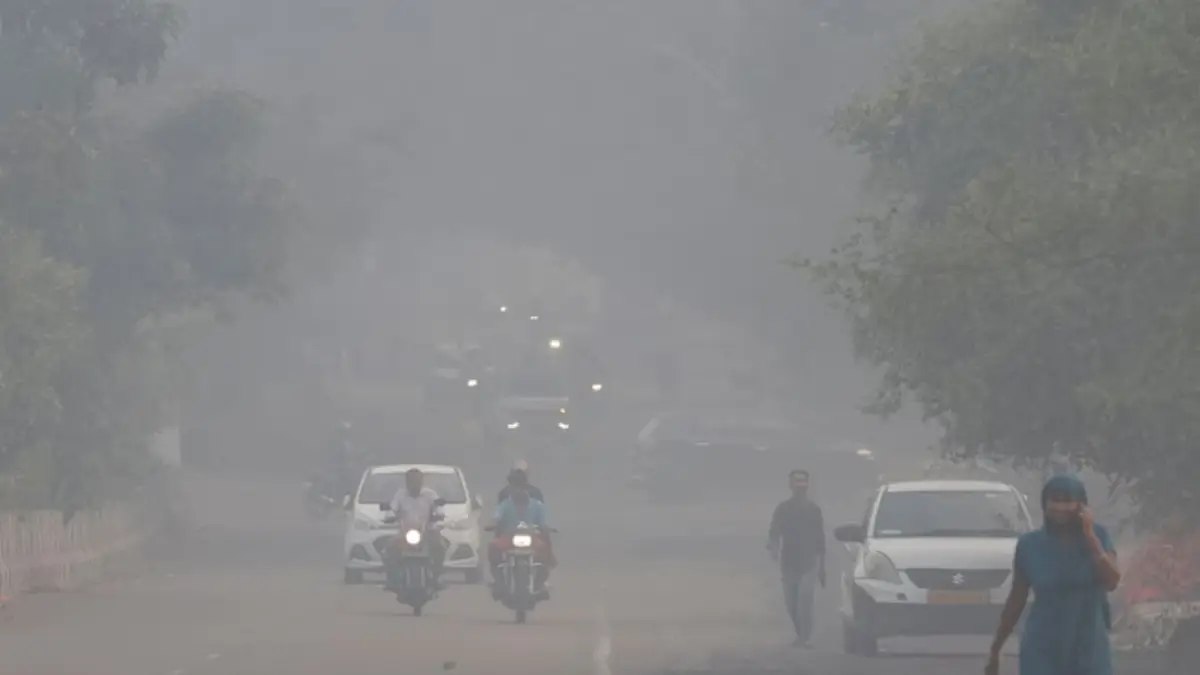As a cold front ushered in Delhi’s chilliest November morning yet, a pervasive smog enveloped the capital, pushing air quality into alarming territory. Temperatures dipped to 11 degrees Celsius—three degrees below the seasonal norm—while the Air Quality Index (AQI) climbed steadily, reaching 337 by 9 a.m., 343 at noon, and peaking at 380 by 8 p.m. This marked one of the season’s most hazardous readings, surpassing the previous low of 371 on October 31.
The haze exacted a heavy toll on residents, who reported stinging eyes, irritated throats, and persistent nasal discomfort amid the suffocating fog. By afternoon, multiple neighborhoods had crossed into the “severe” AQI threshold, including Nehru Nagar, Vivek Vihar, Wazirpur, Bawana, and Burari. Forecasts from the Central Pollution Control Board (CPCB) indicate the air will likely remain in the “very poor” range through November 11.
Despite the escalation, officials at the Delhi Pollution Control Committee (DPCC) noted a silver lining: November’s air quality has outperformed the same period last year, with six of seven days registering lower AQI levels. Unlike 2024, when emergency measures under Graded Response Action Plan (GRAP) Stage III were enforced by November 13, this year’s proactive interventions have delayed such restrictions. The Commission for Air Quality Management (CAQM) confirmed GRAP Stage III—encompassing stricter curbs—will activate only if the AQI exceeds 400.
Preventive actions are in full swing under GRAP Stage II. Authorities have warned against burning biomass, waste, or wood for warmth as cooler weather sets in. Large residential complexes must swap coal- or wood-based heaters for electric alternatives at security posts. Construction sites, especially those over five stories, are required to deploy and maintain anti-smog guns until November 29. Staggered office hours will persist, alongside intensified road sweeping, dust suppression, and pavement repairs across government departments.
Chief Minister Rekha Gupta announced an upcoming expansion of Ujjwala scheme benefits to slum dwellers, promoting a shift to cleaner cooking fuels. These steps aim to curb emissions at the source, though the immediate outlook remains grim.
The pollution crisis extends beyond Delhi’s borders. In Noida, the AQI surged to 354 from 306 the previous day, confining residents indoors and halting weekend routines like morning walks and cycling. “Even a brief outing leaves eyes and throat in agony,” said Pramila Dhar, a Sector 78 resident, as parks in high-rise areas stood eerily deserted.
Station-specific data painted a stark picture: Sector 116 topped Noida’s readings at 357, followed closely by Sector 125 (347), Sector 62 (345), and Sector 1 (341)—all firmly “very poor.” Nisha Rai from Sector 77’s Prateek Wisteria reported a spike in respiratory issues, blaming unchecked construction dust and lax water-sprinkling efforts. In Sector 75’s Panchsheel Pratishtha, the residents’ association has initiated independent sprinkling, but heavy truck traffic continues to stir up grit. Parents are keeping children inside during peak pollution hours.
Greater Noida saw its AQI slide from “poor” to “very poor” at 336, up from 284, with Knowledge Park V at 322 and Knowledge Park III at 328. Manish Kumar of Supertech Eco Village 1 highlighted dust-choked roads and uncovered construction materials, prompting a formal plea to the environment minister for mechanical sweeping and oversight.
Ghaziabad mirrored the downturn, with its overall AQI hitting 339 from 314. Vasundhara registered 388 and Loni 364—both “very poor”—while Sanjay Nagar (298) and Indirapuram (278) hovered in the “poor” zone.
By 10 p.m., Delhi’s AQI had edged to 385, with 20 of 36 monitoring stations in “severe” status. GRAP Stage II’s advisory measures persist, but CAQM officials reiterated the 400-AQI trigger for escalation. As the mercury holds low, the battle against this seasonal scourge intensifies, underscoring the urgent need for sustained regional cooperation.
